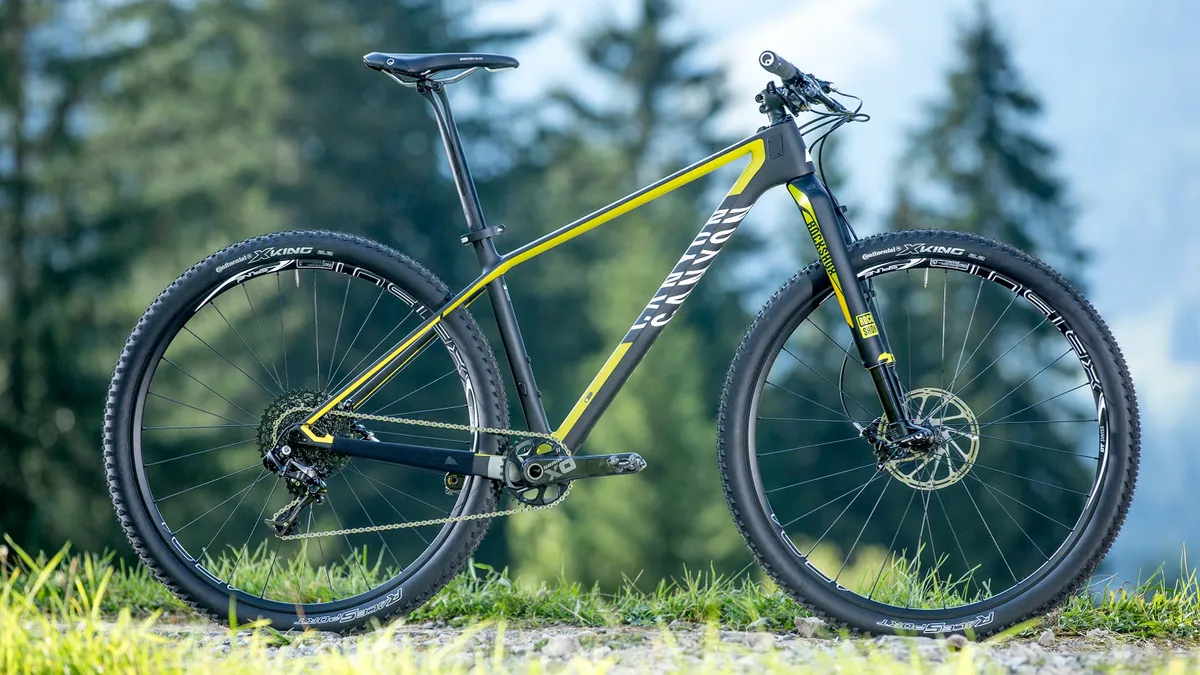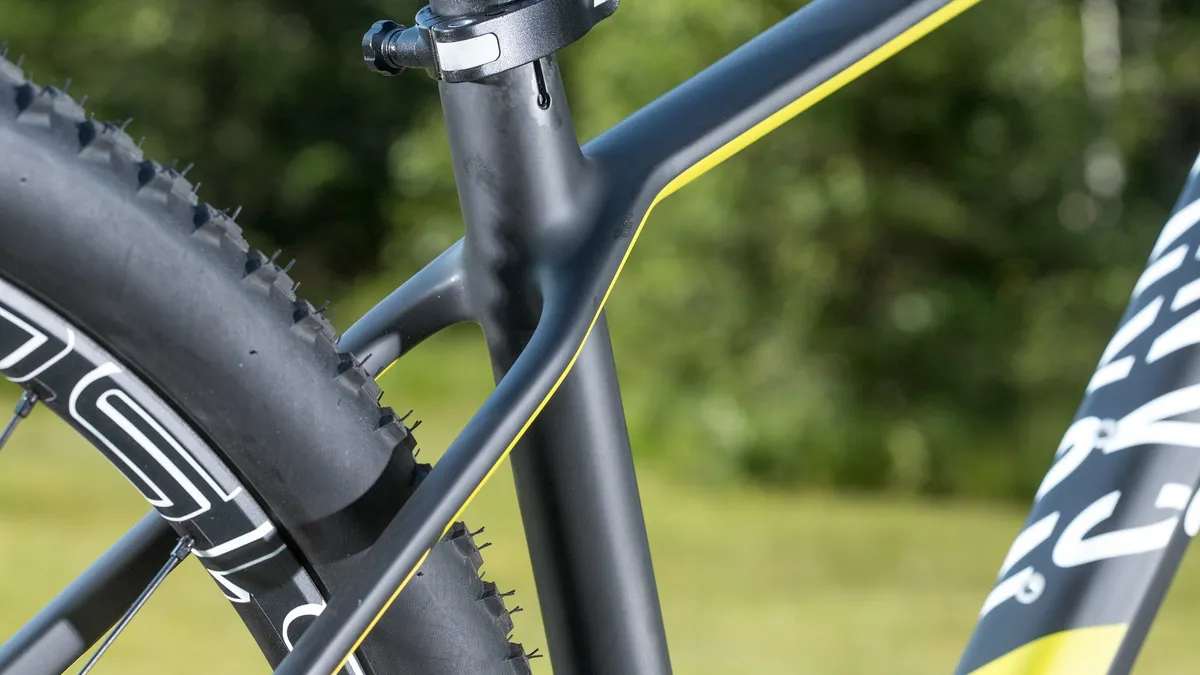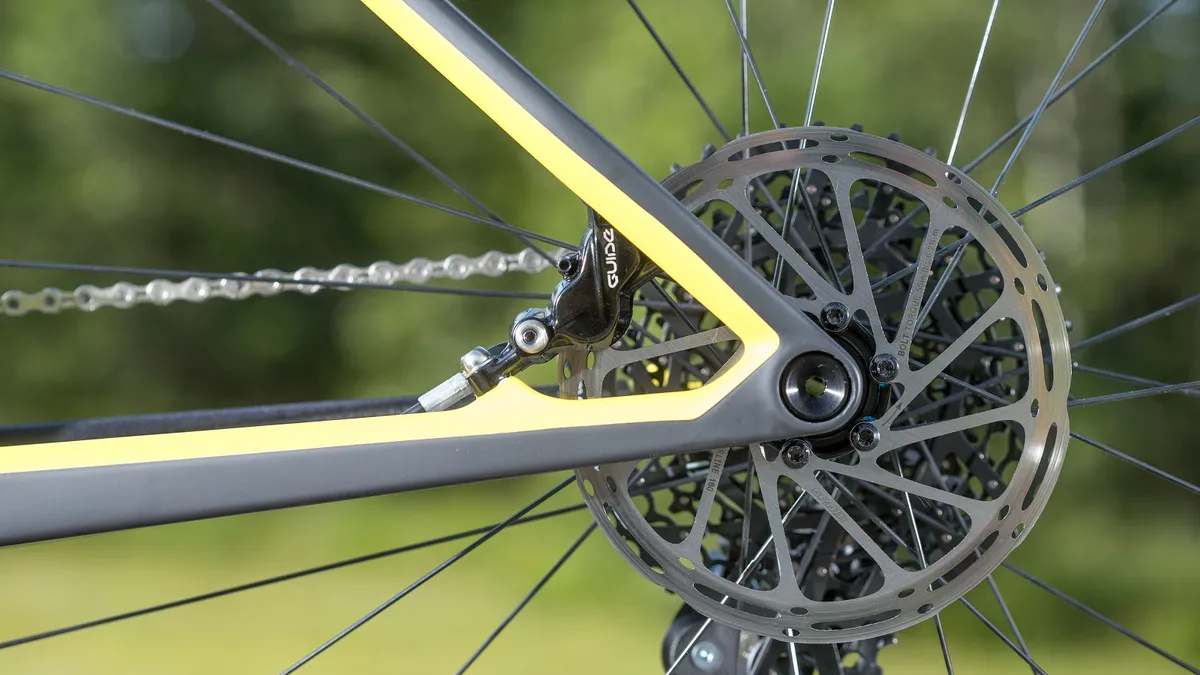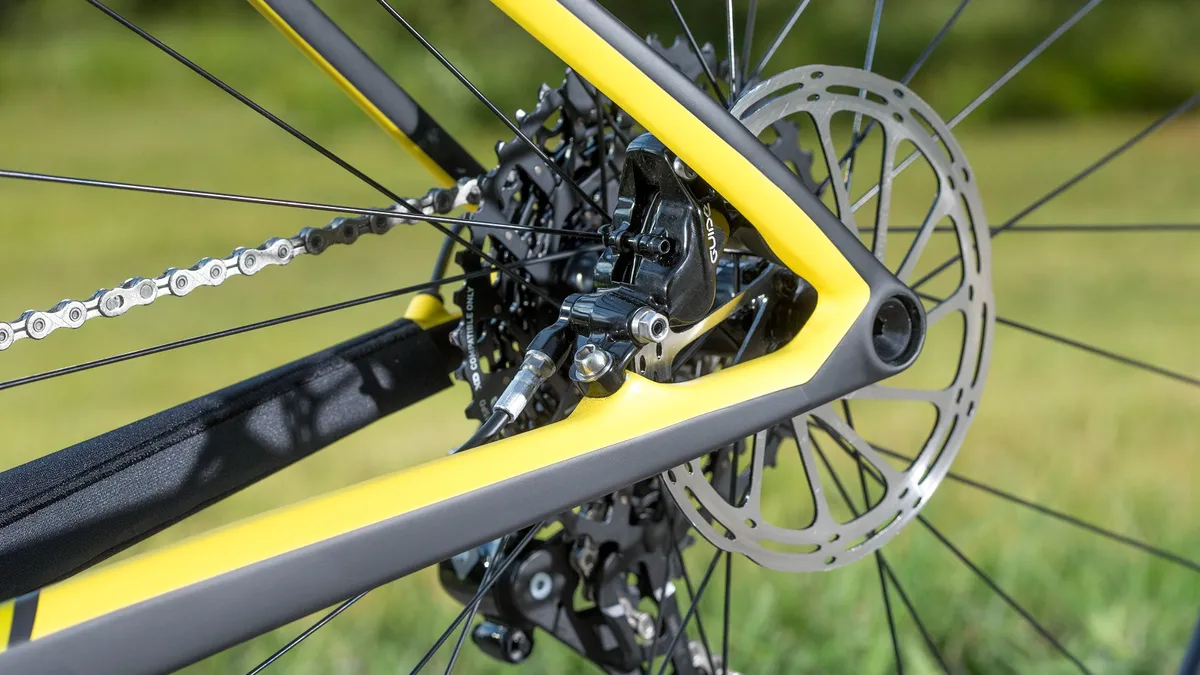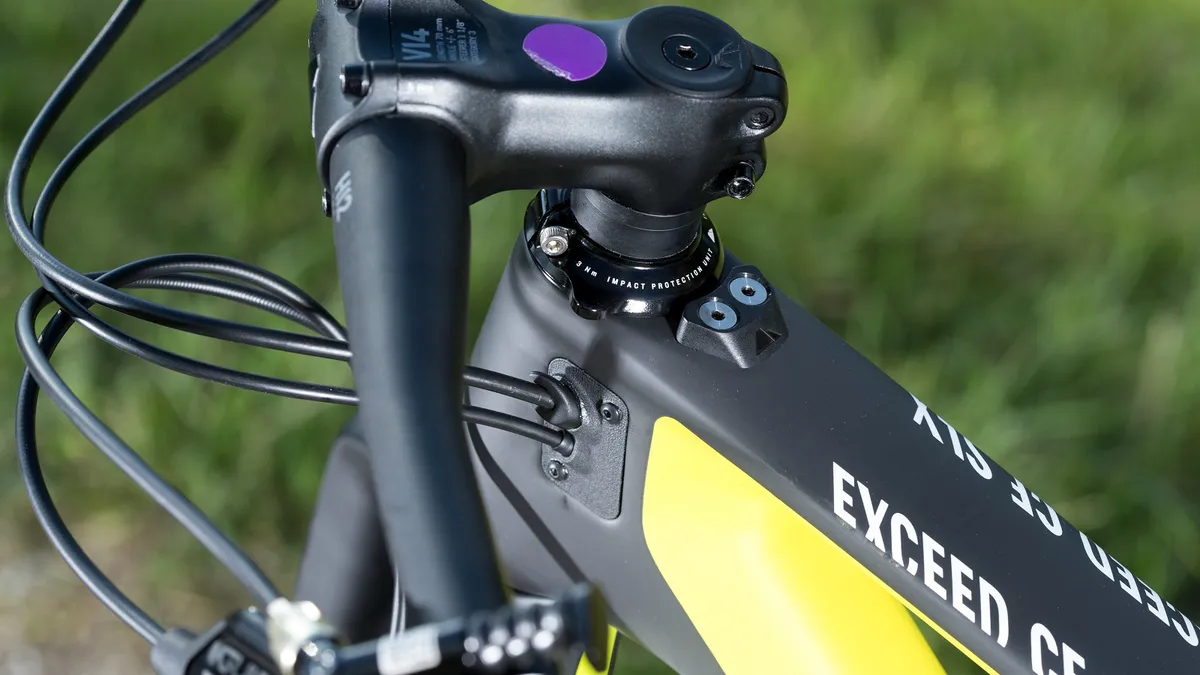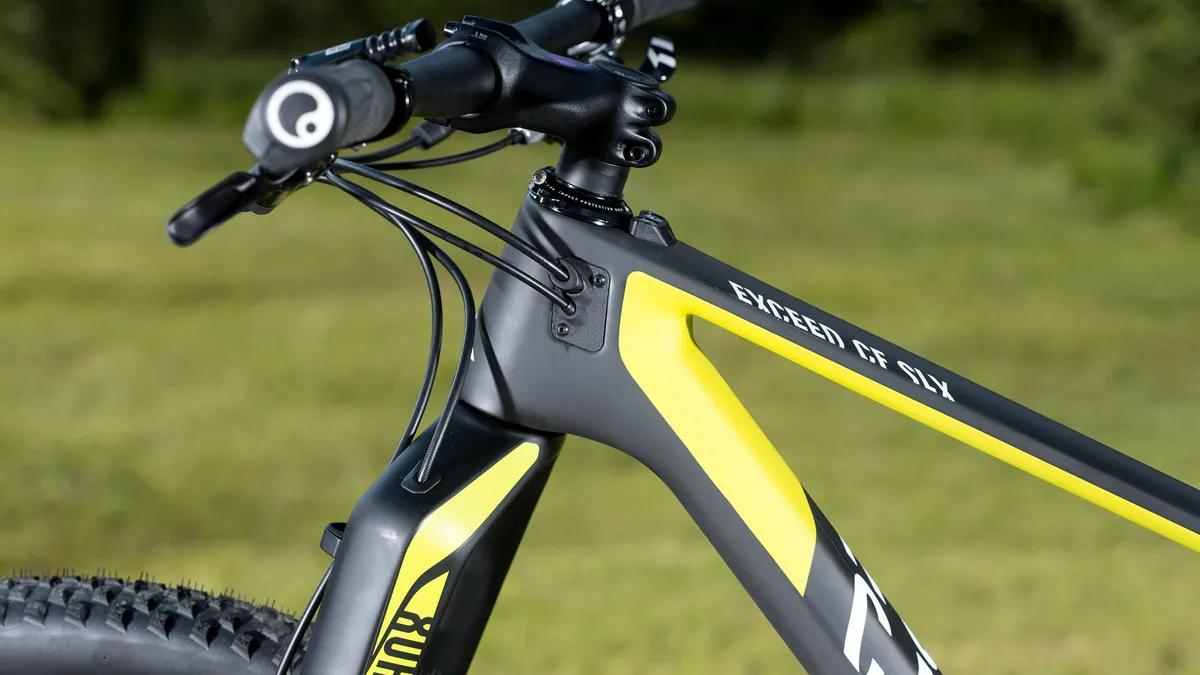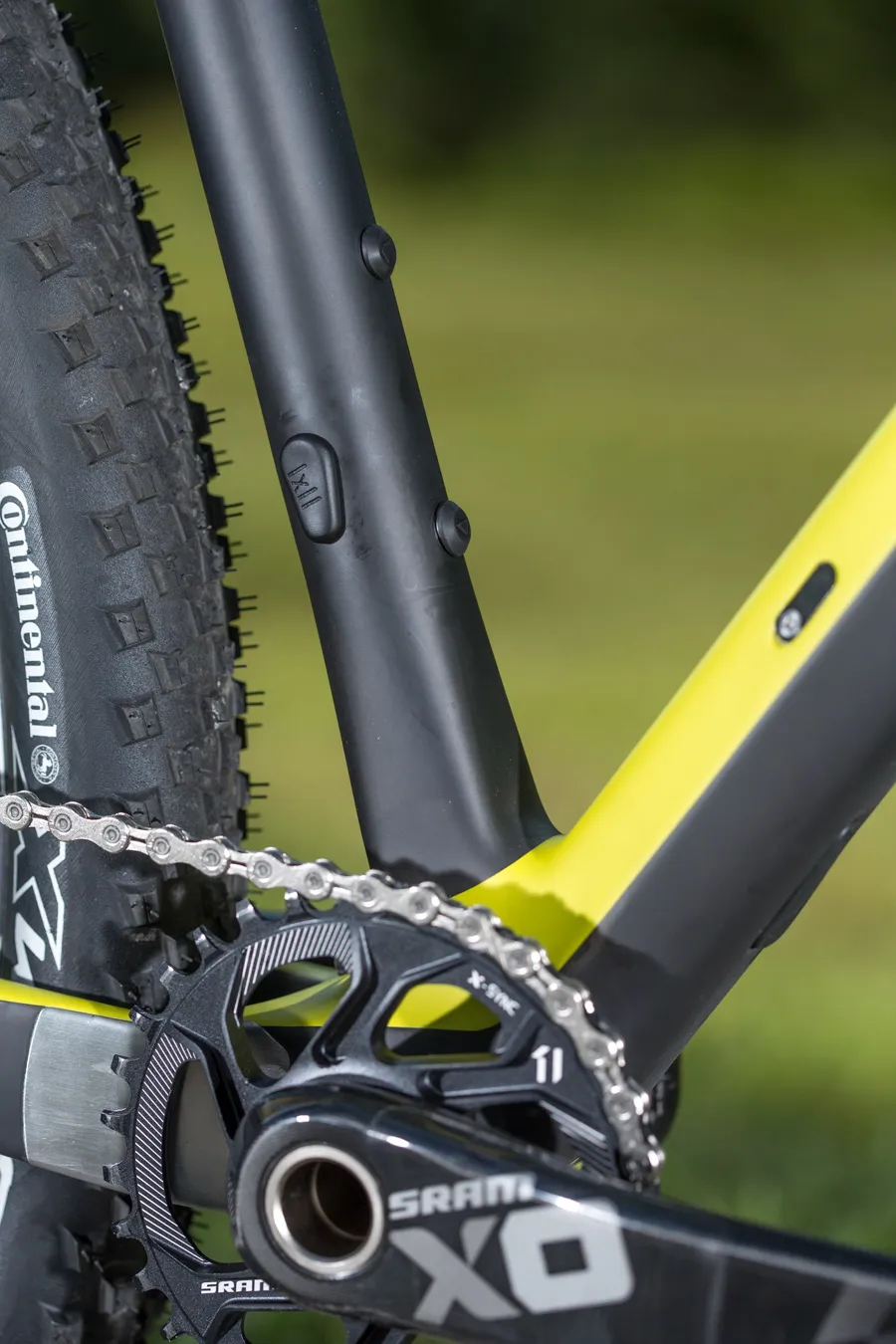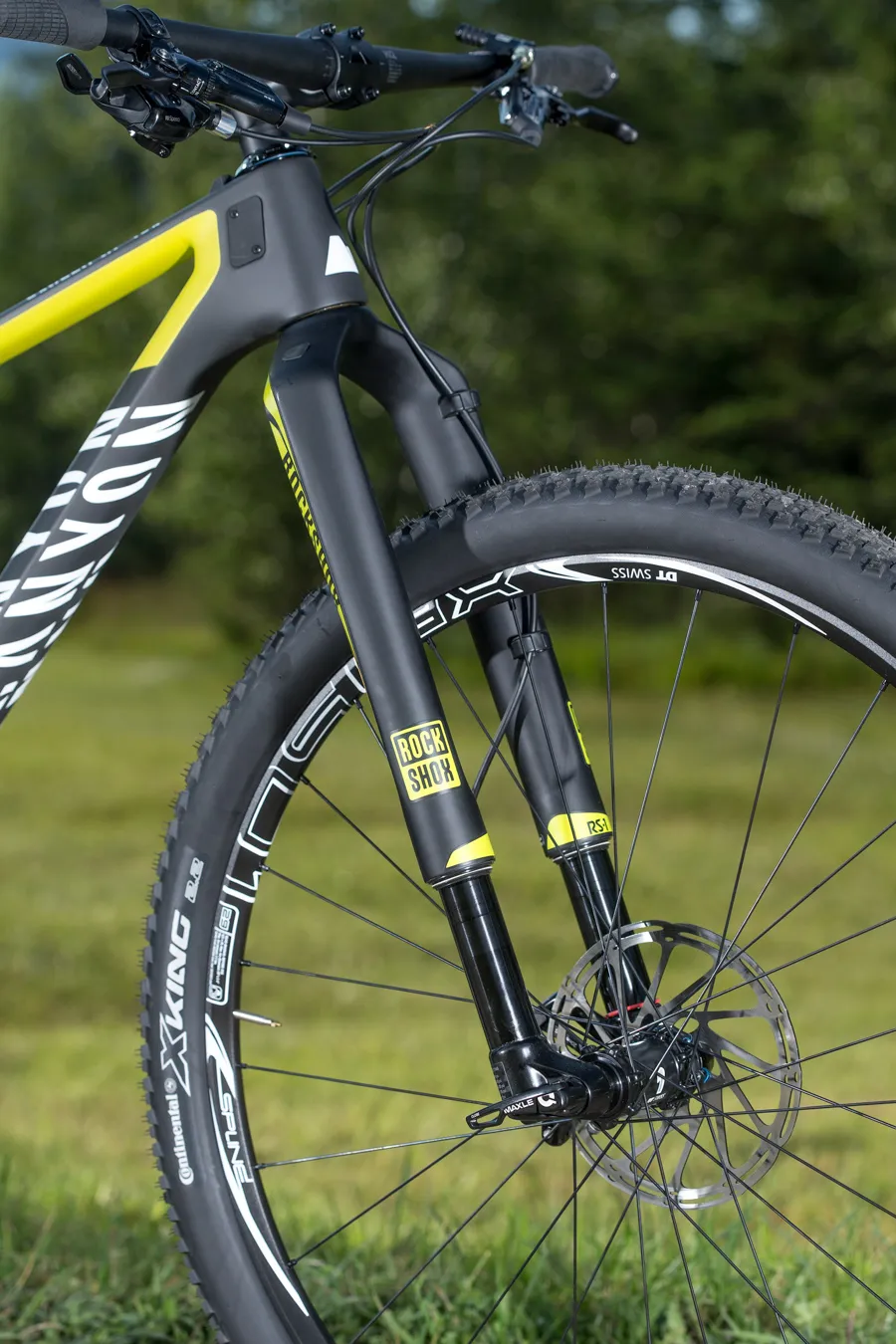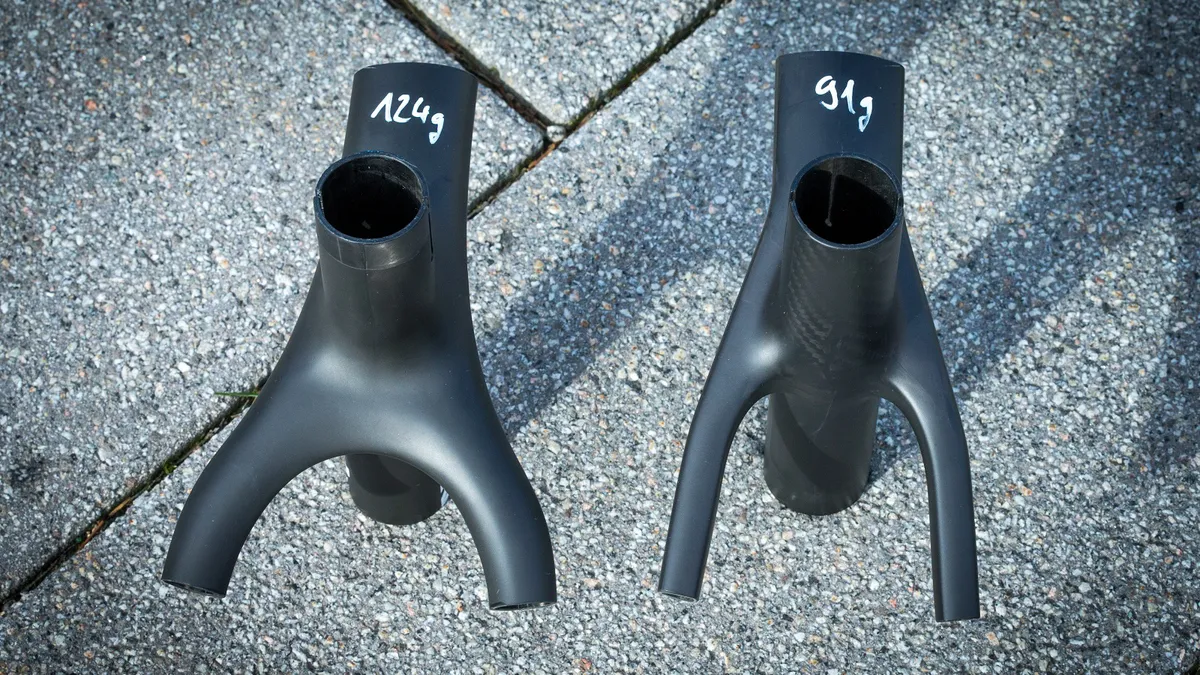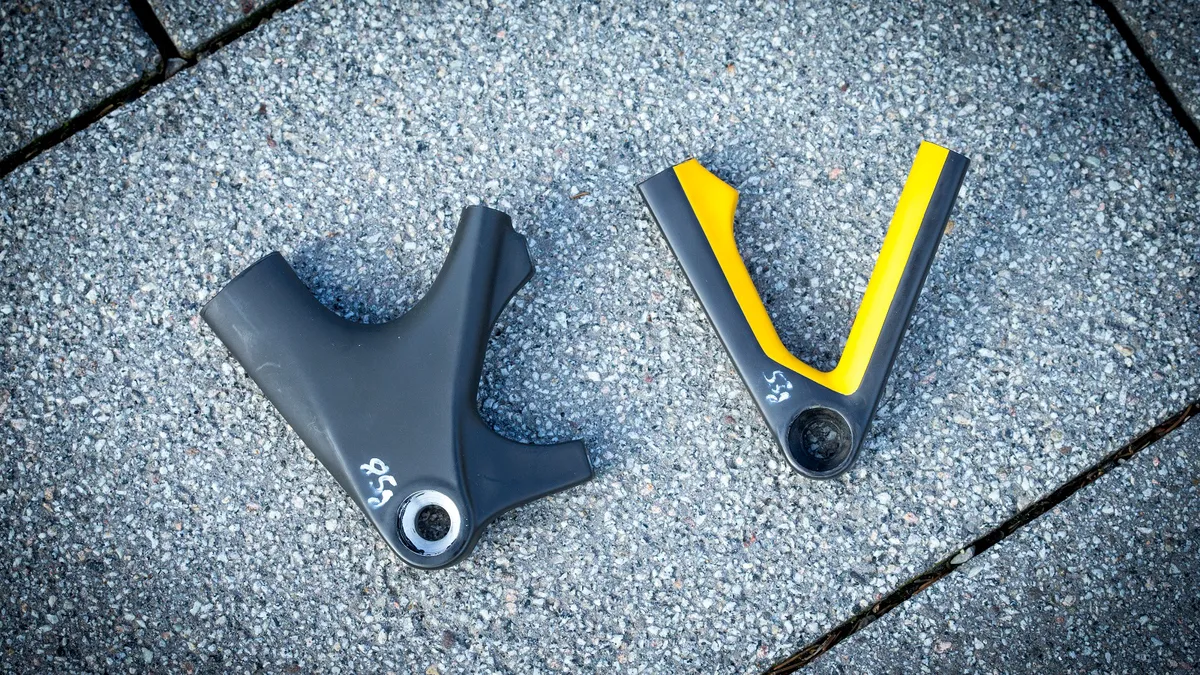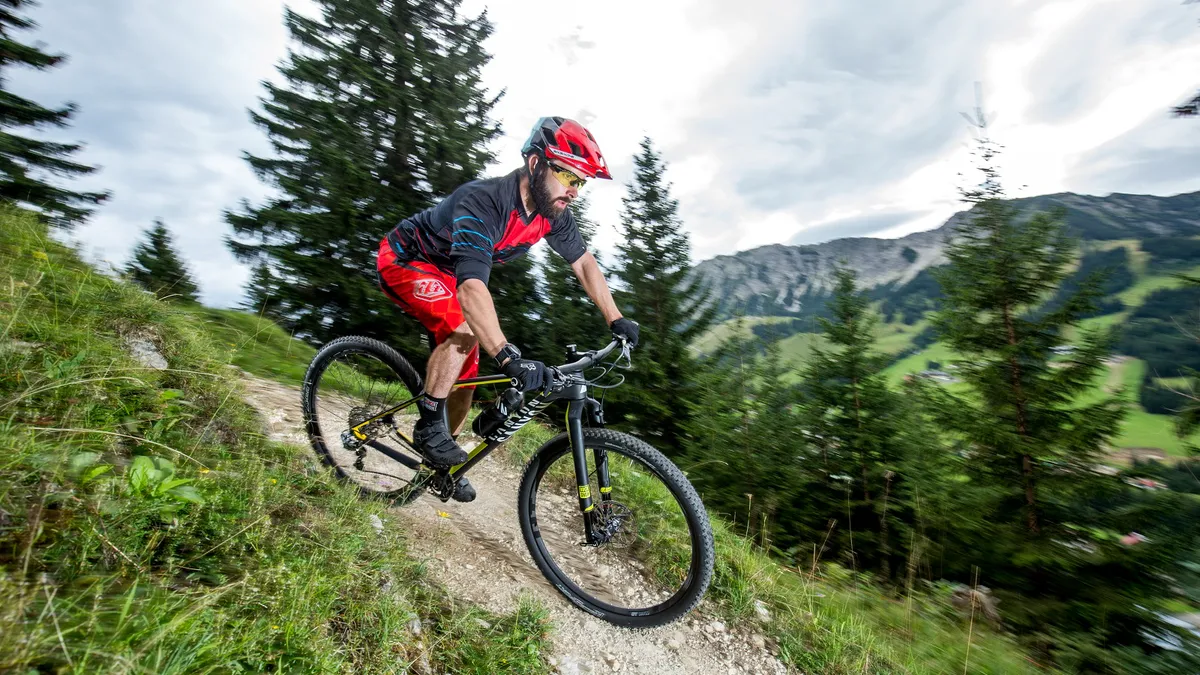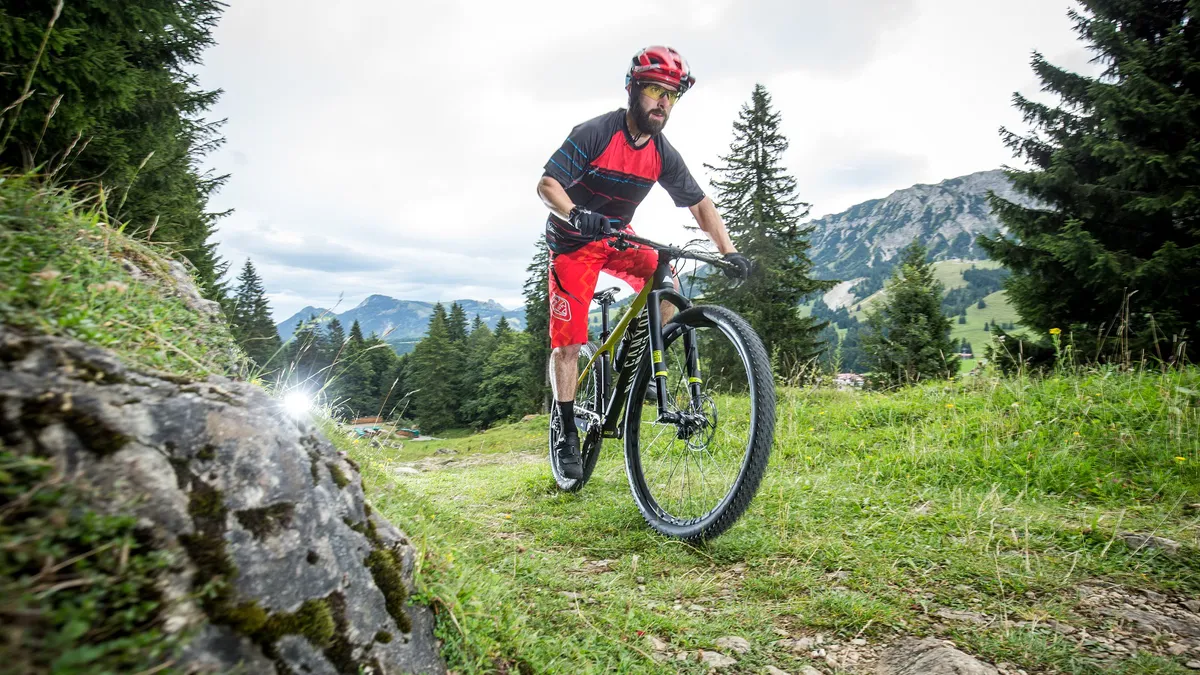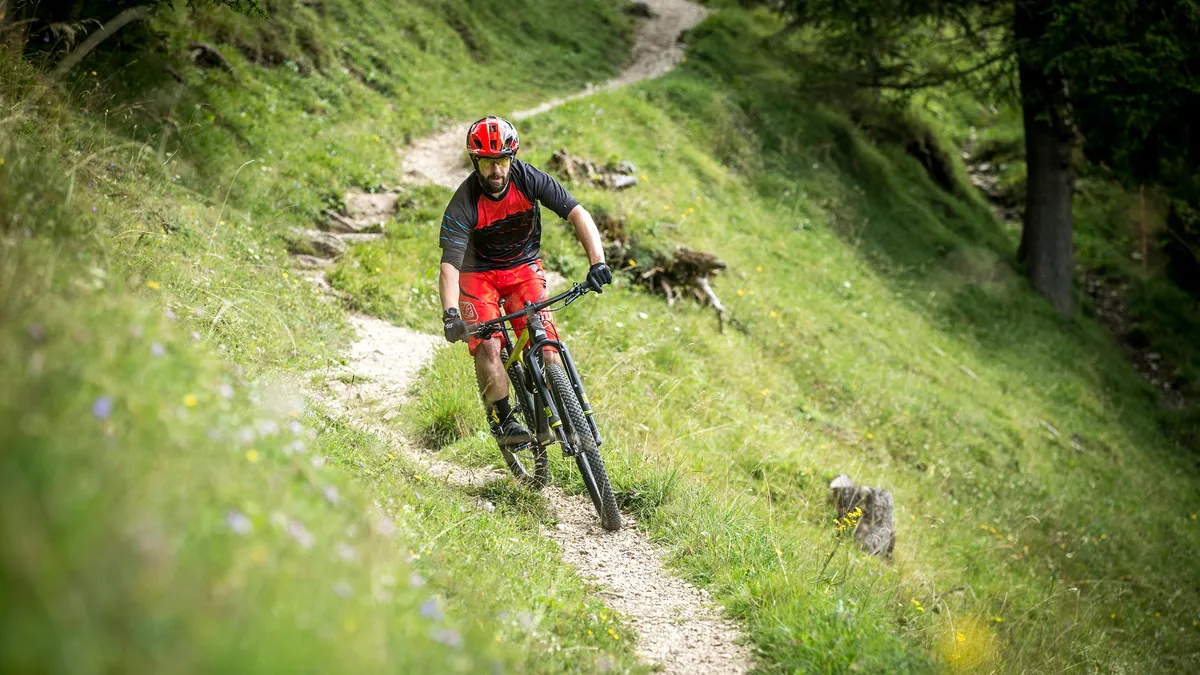Building on the success of its established and highly accomplished top tier cross-country hardtail, the Grand Canyon CF SLX, Canyon went back to the drawing board in a bid to push overall performance levels even further. The result, after one and half years of development, is the new Exceed CF SLX – a 29er bike that Canyon claims is lighter, stiffer, more comfortable and ultimately, faster than its predecessor.
Having already captured the 2015 XCM World Championship under the experienced Topeak-Ergon Racing rider Alban Lakata earlier this year in Val Gardena, these could well be more than just claims. But how did Canyon achieve this?
Related: Check out more news from Eurobike at our Eurobike homepage
Well, according to the German firm, the key to a fast cross-country hardtail doesn’t solely rest with the frame's stiffness-to-weight ratio. There’s more to it than that, with comfort, durability and control all receiving a huge focus, according to Canyon.
Weight
“We were inspired to reduce the frame weight by minimising the surface of the frame using four different approaches”, said Jan Ehrhardt, one of Canyon’s senior engineers.
“These four approaches include slim nodes – the points where the tubes of the bikes are joined together – straight lines, slender tubes and smart details. You can find these four key principles of the minimal surface concept in all other areas of the bike,” Ehrhardt added.
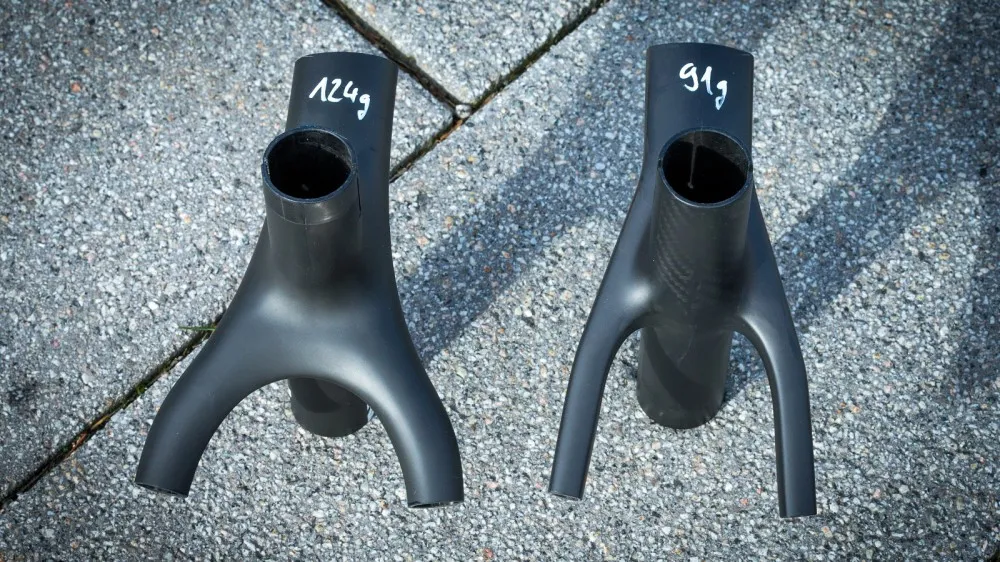
The slimmer, lighter nodes. Here we see the seat/top tube junction with the Grand Canyon CF SLX on the left, and the new Exceed CF SLX on the right
Canyon looked extensively into the tube junctions where, commonly, filler material (known as ‘Bulk Material Composite’) is added to tight radiuses or used to ensure a better connection between the tubes.
By redesigning complex junctions such as the seatstay/seat tube/top tube meeting point, its engineers were able to reduce the amount of filler material required. All in, this slimming down of the nodes across the entire frame contributed a weight saving of 109g over Canyon's former top tier cross-country race bike, the Grand Canyon CF SLX.
If you take a closer look at the rear triangle, you’ll see there’s little in the way of tube manipulation and no kinks in bends in the seatstays.
“The shortest way to connect two points is by using a straight line”, said Ehrhardt. “We only added angles, bends or nicks when the room available or interference with the components required us to make them. Any other circumstances, we just went for the straightest possible way.”
Weight reduction didn’t just stop with the more obvious changes you can see on the surface. The tubes themselves received their fair share of attention too.
In Canyon’s words: “Slender tubes is the third key element of the minimal surface concept, and means we’ve found the ideal balance between the size of the cross-section and its wall thickness”. By settling on a cross-section and wall thickness that Canyon refers to as “the perfect compromise”, the direct-sales giant has managed to shave around 150g off the previous frame while retaining the stiffness and strength required from the demanding situations the Exceed is sure to find itself in.
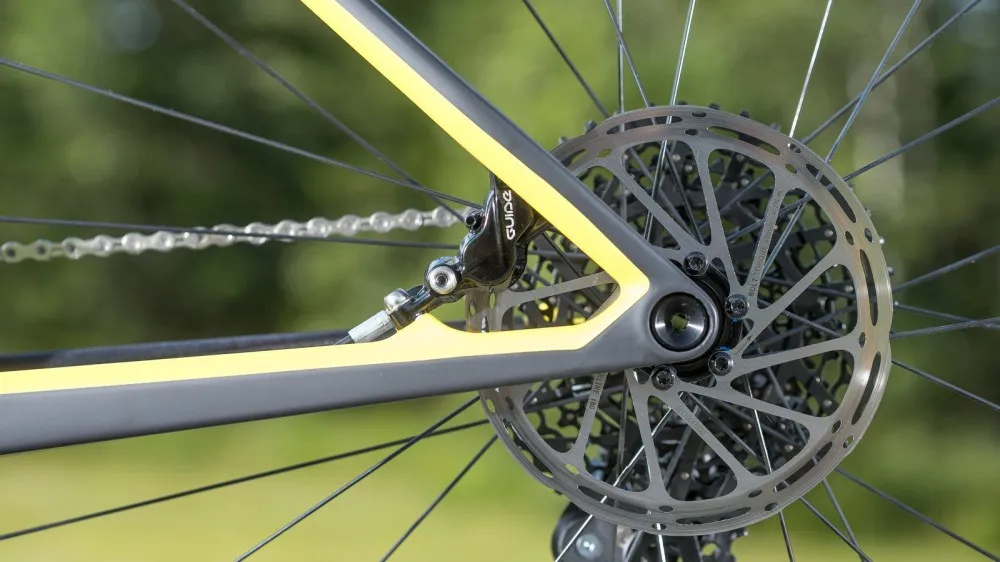
The brake mount is a structural part of the frame
The last key area Canyon focused on with regards to frame weight covers many of the small touches that many of us might take for granted. If you take a closer look at the rear brake caliper for example, you’ll see that Canyon has actually utilised its position between the chain and seatstay, making a structural element of the bike, bracing and stiffening the two tubes and saving the need for Canyon to use a tremendous amount of filler material on the left-side dropout. Other nice little touches include the removable front derailleur hanger, which uses the same screw to fit the hanger and derailleur in place.
In all, these four different approaches reduced the overall surface of the frame by eight percent (compared with the Grand Canyon CF), producing a frame weight for the Exceed CF of a claimed 870g (size medium).
Stiffness
Reducing weight is all good and well, but for a bike to be pedalled efficiently, stiffness – and plenty of it – is absolutely essential.
“For sure, minimising the surface (and therefore reducing the weight), you need to pay attention that you’re not lowering the stiffness to a critical point," said Ehrhardt. "The key element to be able to reduce the surface without sacrificing stiffness and is to use developments in fibre technology and fibres with a higher Young’s Modulus than standard, or previous carbon fibres”.
Canyon applied the use of ‘pitch based’ fibres, which are made from a different base material than standard carbon fibres and can produce double the stiffness of standard carbon fibres. Naturally, this type of material is more brittle than standard carbon fibre and is therefore only used in areas of the frame that truly require high levels of stiffness – but as a result, it's ensured there’s more than enough stiffness to go around, without impacting on the frame weight.
Comfort
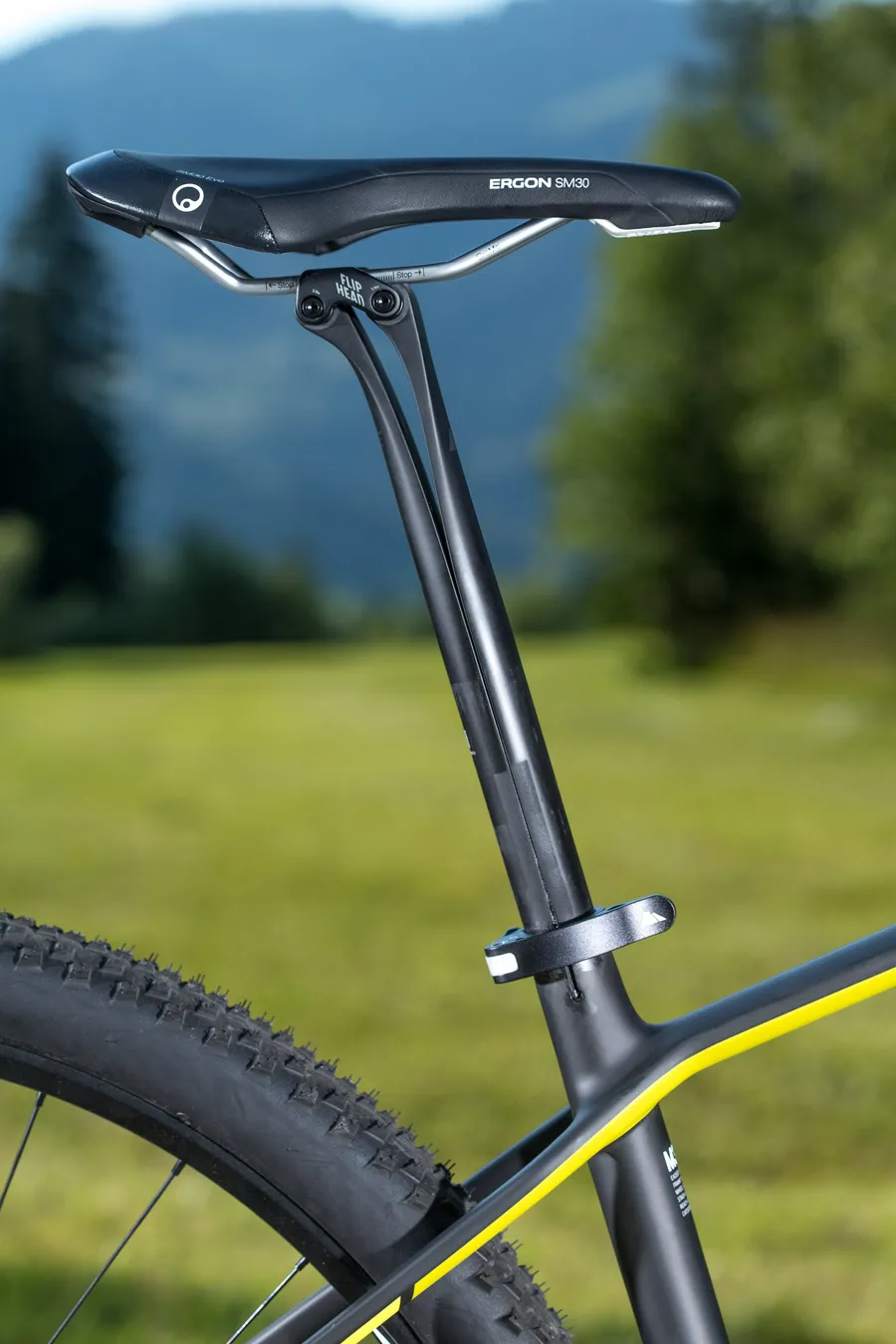
Canyon's VCLS seatpost certainly aids in comfort, but isn't the whole story
Having a stiff and light bike is one thing, but if it’s so uncomfortable to ride that you’re walking like John Wayne after only an hour in the saddle, it’s not much use, especially to the likes of cross-country marathon riders. The Exceed has been designed to have 10.9mm of compliance which is achieved by a vertical compliance of 6mm built into the frame, and 5mm of compliance obtained via Canyon’s VCLS flat spring seat post.
Durability
Dish out a massive wad of cash on a super expensive bike and the last thing you want to happen is for a single rock strike to end your ride/season or even your bike. Canyon has used what it dubs ‘Impact Spine’ – essentially a thickened rib that runs down the frame's midline within the tube itself – located on the underside of the top tube and down tube and helping to ward off nasty, potentially damaging impacts as well as the kind of forces that could buckle the frame.
Canyon reps were also keen to point out that their slender tube design, which use a reduced cross-section so the wall thickness doesn’t reach a critical minimum, is another key contributor to the Exceed’s overall durability.
Control
Anyone who's watched a World Cup XC race in the last couple of years will have seen just how demanding the modern tracks can be. A twitchy, nervous-handling featherweight machine just won’t cut it these days.
Like many of the trail bikes we’re seeing of late, the Exceed seems to have followed suit, sporting a longer front centre that uses a shorter stem to compensate and differences in length (the medium bike comes with a 70mm stem for example, but increases as you step up in size). This means more stability and confidence at speed, along with more reactive handling.
The reach on our medium test bike was 425mm, with a head angle of 69.5 degrees, and a seat angle of 74 degrees. That’s a good 10mm longer than the Grand Canyon CF SLX and 0.5 degrees slacker at the head tube. The engineers at Canyon did say that they would have stretched the front centre out further and bolted an even shorter stem in place, but that team riders were not keen.
Canyon was also keen to grow the rear centre of the bike as the frame size increases, in order to keep the rider in a more neutral position on the bike, which is especially useful on technical climbs. As a result, the chainstay length grows 5mm as you jump up each size (the medium 29er frame has 427mm chainstays while the extra-large gets 437mm).
There’s more…
Canyon understandably wanted to really go the whole hog with the new Exceed hardtail, so included some great finishing touches in a bid to help it stand out among the competition.
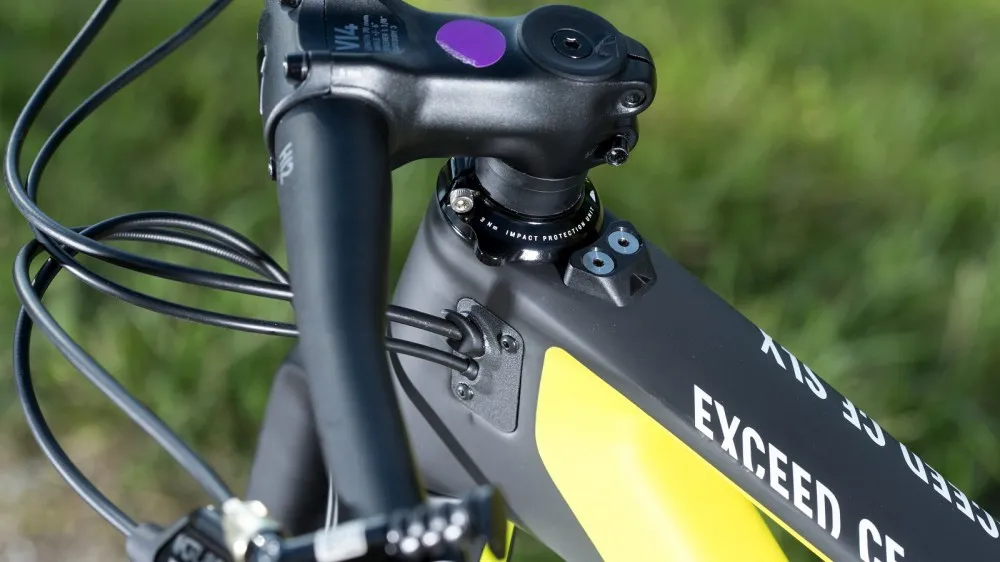
Don't worry, this special rubber bumper will save that top tube from brake lever damage
The Impact Protection Unit carries over from the older models and does a good job of preventing damage to your frame or controls should your bars spin during a crash. The simple design consists of a small rubber bumper fixed to the top side of the top tube and a wing spacer that doubles as a headset top cap. As the bars spin, one of the wings will contact the rubber bumper before the shifter or brake lever impacts on the top tube.
Other neat touches include the stiffer thru-axle at the rear, tidily executed internal cable routing (the team riders say this helps avoid the build-up of mud) as well as a couple of real futureproofing touches. If you want to run Di2, no worries. The battery can easily be fitted at the lower end of the down tube, just above the bottom bracket. There’s also routing for a stealth dropper post should you wish to get a bit wild on the trails.
Initial riding impressions
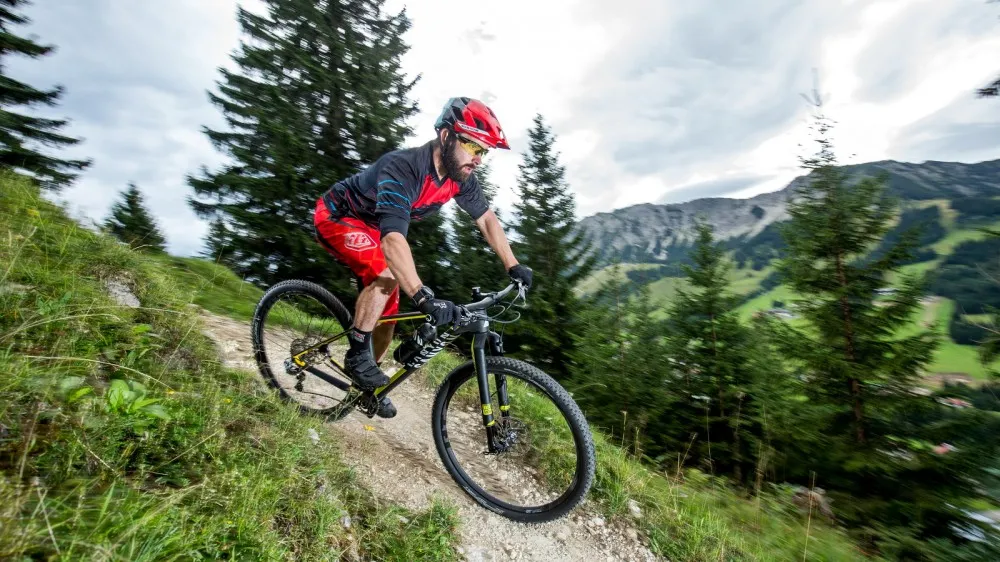
We're eager to get the Exceed on our trails
Our time was extremely limited aboard the latest Exceed CF SLX and the trails we rode out in Germany were, well, to be honest, more fire/gravel road than technical singletrack. Still, there was no getting away from the fact that our medium test bike, which weighed in at 9.44kg, was sprightly and very keen to get moving. Power delivery felt efficient and the bike taut as the cranks started to get a pummelling. When seated over rougher terrain, things were relatively comfortable for the most part and the three hours we spent in the saddle were easygoing on our behinds.
The few descents we did hit that were fast and rough in places did offer a glimpse into just how capable the more stretched out geometry is. The longer front centre and shorter stem works well together and really lets you descend with confidence. In fact, we think it’d be possible to go even a touch longer with the front end of the bike.
We’ll have a full test when we get the bike back onto our home trails, so stay tuned for more soon. Pricing, range details and expected availability are to be confirmed.
